trigonometric function
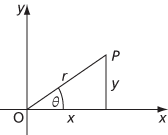
Adjacent x, opposite y, hypotenuse r.
Using degrees
The basic trigonometric functions, cosine, sine, and tangent, are first introduced by using a right-angled triangle where 0 < θ < 90, but cosθ°, sin θ°, and tanθ° can also be defined when θ is larger than 90 and when θ is negative. Let P be a point (not at O) with Cartesian coordinates (x,y). Suppose that OP makes an angle of θ° with the positive x-axis and that |OP|=r. Then the following are the definitions:

It follows that tanθ° = sinθ°/cosθ°, and that cos2θ° + sin2θ° = 1. Some of the most frequently required values are given in the table.
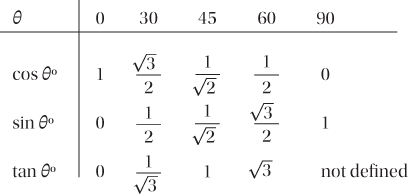
Common values
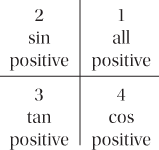
Parity by quadrant
The point P may be in any of the four quadrants. By considering the signs of x and y, the quadrants in which the different functions take positive values can be found and are shown in the figure.
The following are useful for calculating values, when P is in quadrant 2, 3, or 4:
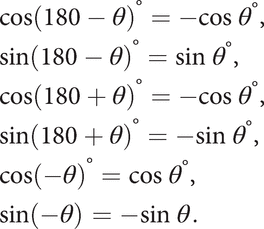
The functions cosine and sine are periodic, of period 360; that is to say, cos(360 + θ)° = cos θ° and sin(360 + θ)° = sin θ°. The function tangent is periodic, of period 180; that is, tan(180 + θ)° = tan θ°.
Using radians
In more advanced work, particularly involving calculus, it is essential that angles are measured in radians. The functions sine, cosine, and tangent are defined by the same trigonometric ratios but, with angles now measured in radians, sin, cos, and tan are technically different functions from when degrees are used. For example, the functions cos and sin now have period 2π, and tan has period π.
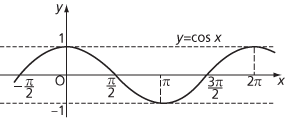
Graph of cosx

Graph of sinx
For identities connecting the trigonometric functions, see appendix 14. These identities apply whether degrees or radians are used.
The other trigonometric functions, cotangent, secant, and cosecant, are defined as follows:

where, in each case, values of x that make the denominator zero must be excluded from the domain.
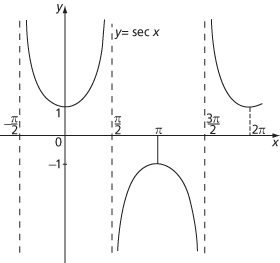
Graph of secx
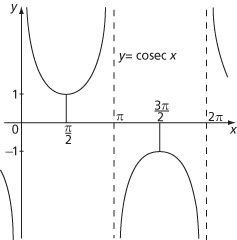
Graph of cosecx
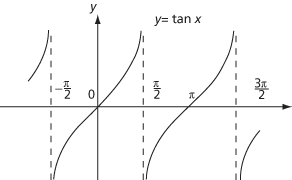
Graph of tanx
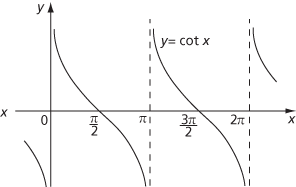
Graph of cotx
When radians are used, the derivatives of sinx and cosx are

The derivatives of the other trigonometric functions are found from these, by using the rules for differentiation, and are given in Appendix 7.
The complex trigonometric functions can be defined in terms of the trigonometric series expansions or in terms of the complex exponential by

Euler's formula exp(iz) = cosz + isinz then holds for all complex z, though it does not follow that cosz is the real part of exp(iz) in general. Likewise, the identity cos2z + sin2z = 1 still holds for all complex z.
The trigonometric and hyperbolic functions are then related by

for all complex z.
- Cartesian space
- Cartesian tensor
- cascade charts
- case control studies
- casting out nines
- Catalan numbers
- Catalan's conjecture
- Catalan's constant
- catastrophe theory
- categorical data
- categorical proposition
- category
- category error
- catenary
- catenoid
- Cauchy, Augustin-Louis
- Cauchy convergence criterion
- Cauchy distribution
- Cauchy-Frobenius lemma
- Cauchy integral test
- Cauchy sequence
- Cauchy's formula for derivatives
- Cauchy's integral formula
- Cauchy's Integral Theorem
- Cauchy's mean value theorem